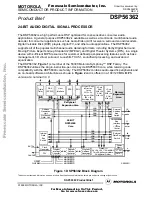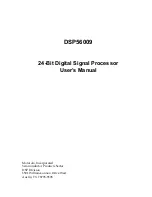
Page 12 of 25
The Constant Fraction Discriminators CFD8c, CFD7x, CFD4c, CFD1c and CFD1x (11.0.1701.1)
Figure 3.9b: Signal traces (as in Figure 3.8b left) but with too long (left picture) and too short delay cable (right)
Figure 3.10b: Signal traces (as in Figure 3.8b left) with a too short delay cable (left picture). This can fairly be
compensated by increasing the CFD fraction from 0.35 to 0.6 (right picture)
3b.3.3
CFD fraction
Optimal choice of the
CFD fraction
ratio is as important as the appropriate selection of the
CFD delay
and is linked to it
according to the above guide lines. Ideally, these two parameter settings will result in a bipolar signal in such a way that the
zero-crossing happens with the maximum possible slope. Although this depends on the exact shape of the signal a
CFD fraction
ratio between 0.3 and 0.45 will give optimal results for near-Gaussian shaped input signals (only the rising edge is
relevant).
RoentDek
delivers the CFD with a standard
CFD fraction
setting of about 0.35. The
CFD fraction
can be varied
between 0.15 and 1 via a potentiometer.
In order to observe and quantify the
CFD fraction
ratio on the oscilloscope one can use a very long delay cable and estimate the
relative pulse heights when the signal portions appear distinct as in Figure 3.9b left (comparing positive and negative signal
height).
Under certain experimental conditions it may be beneficial choosing a higher or lower
CFD fraction
ratio than the default value.
CFD fractions
smaller than 0.3 should generally only be set for high signal-to-noise ratio. Then a low
CFD fraction
can be of
advantage in case of non-linear amplification of the input signals (e.g. presence of saturation effects in the amplifier before the
CFD) or in case of varying relative signal width (FWHM) as function of pulse height. Low fraction values may also improve
the temporal resolution for very short signals (< 3 ns FWHM). Furthermore, choosing a very short delay cable (i.e. 0.5 ns) in
combination with a high Walk level can force the CFD into the operation mode of a leading edge discriminator.











































